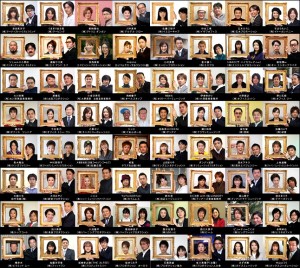Yomiuri has reported that the Justice Ministry has formally proposed to scrap the locally-administered alien registration system in favor of a national system under the control of (you guessed it) the Justice Ministry. This has been in the works since last year and would have to be approved by the Diet as an amendment to the Immigration Control and Refugee Recognition Act, so don’t expect any changes overnight, but these are the changes we can apparently expect from the new system:
Benefits for foreigners
- Ordinary period of stay on work/study permits will be extended from three to five years, meaning a bit less effort and expense to stay current on registration.
- The “trainee” system will be renamed to something more reflective of reality, and “trainee”-class workers will get more explicit labor law protection.
- Special permanent residents (zainichi Koreans) will enjoy much easier re-entry processing. Departures from Japan for up to two years will not require a re-entry permit, and a re-entry permit will allow them to stay outside the country for up to six years (currently the maximum is four). The zainichi apparently won’t be part of the new alien registration system, but will get their own certificate instead. (They still have to carry it around, though.)
- Centralizing everything at the Justice Ministry will probably cut out some of the processing time lags that exist in updating alien registration information (for instance, Japan still doesn’t know how many foreigners it finished out the year with because immigration and the city halls haven’t finished striking the records of people who left for good at year’s end). It should also spare people the shuffle of having to personally notify city hall every time their immigration status or period of stay changes.
New problems for foreigners
- Assuming this replaces the existing alien registration system completely, city hall will no longer have information on the city’s foreign residents, which might affect the way municipal services get distributed (hard to tell, though).
- In the same vein, since everything has to go through the Immigration Bureau, updating registered information like address or employer may not be as convenient as walking into city hall. (Here’s one blogger [in Japanese] who picked up on this drawback right away.)
- According to NHK, one of the motivations behind this is that the current system does not “make it a duty” to report a change of address to city hall, which makes it harder to track the foreign population in each municipality. The subtext seems to be that there will be harsher penalties for not keeping this information up to date (right now, while foreigners are supposed to keep their address updated, nothing particularly bad happens if they forget to do so).
- It seems that some personal information will be taken off the face of the card and put on an IC chip inside the card. Some paranoid folks hate the idea of the Gaijin Chip, but I am actually in favor of it if it keeps this information private to a casual observer. (The flip side is that when us foreign lawyers get carded, the cop can’t see that our profession is “attorney.”)
All this said, as David Chart points out, the Justice Ministry hasn’t been too bad to “good foreigners” lately. Although the new fingerprinting system is kind of annoying, the Ministry at least had the decency to give re-entrants a separate line at Narita immigration instead of lumping them with tourists (which was part of the initial proposal, as I recall). So it isn’t too much of a stretch to expect that they will ultimately work this system in a fairly efficient manner, even if certain points raise alarm on paper.
The proposal is now in the hands of the LDP, which will have to make it into a bill for the Diet’s consideration, so theoretically anything can happen from this point.

